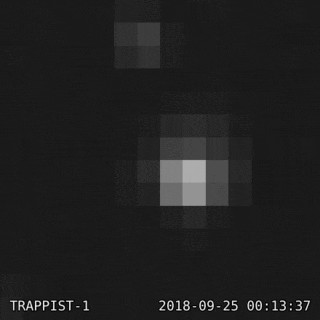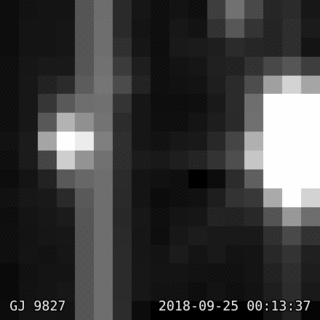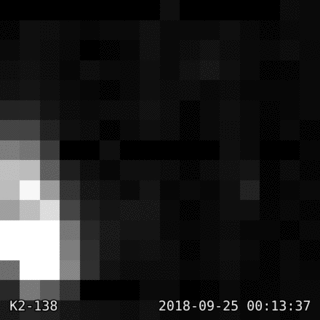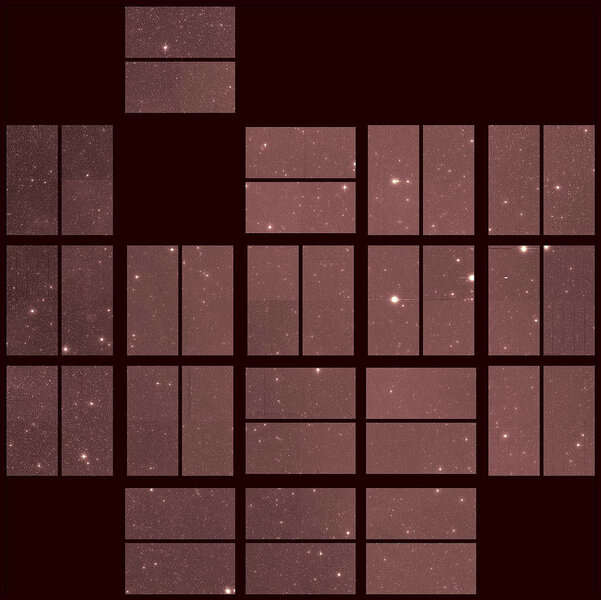Create a free profile to get unlimited access to exclusive videos, sweepstakes, and more!
Kepler's final glimpse of the galaxy kind of looks like space Tetris
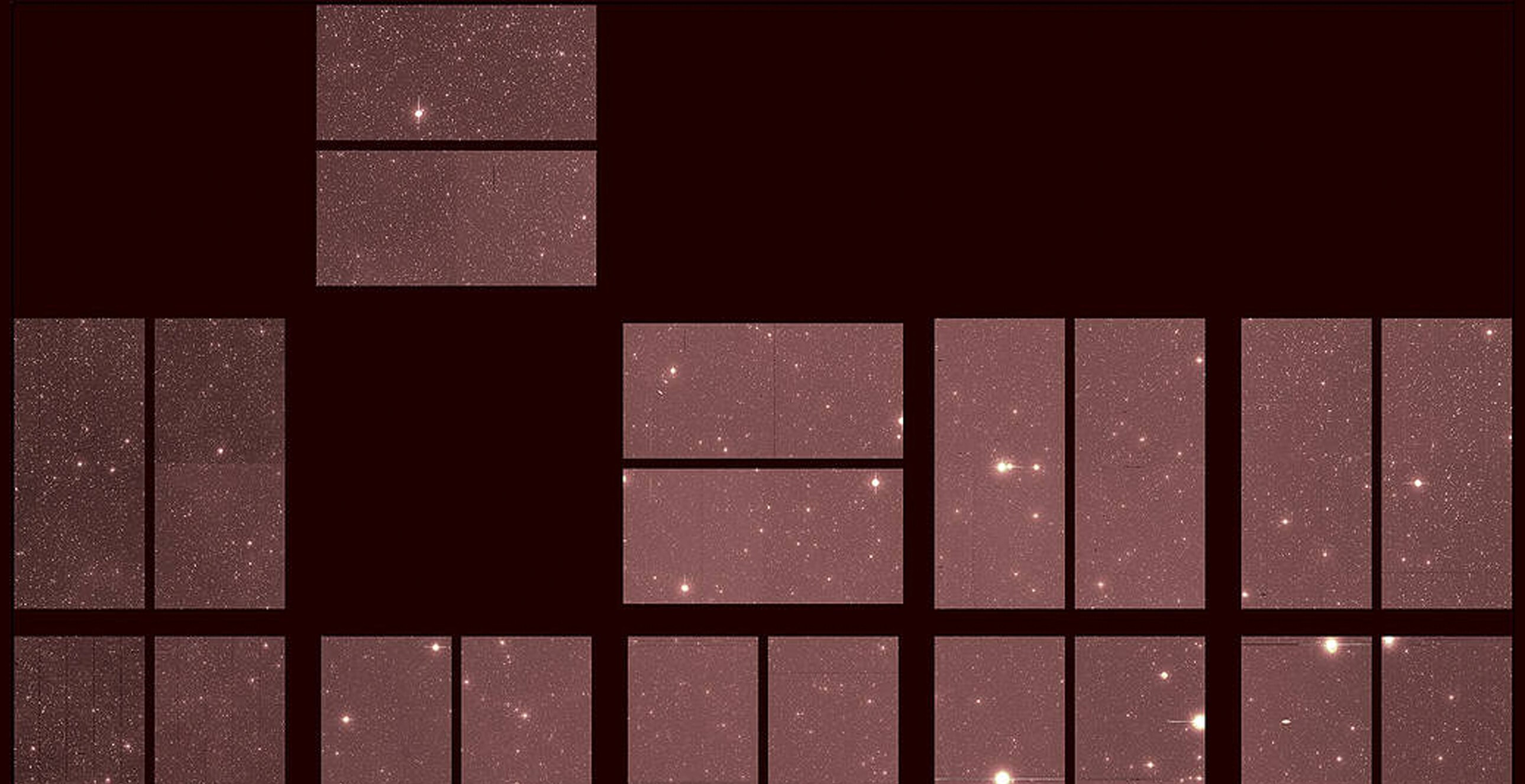
Just before NASA’s Kepler space telescope closed its eye forever, it gave us a few parting glances at our galaxy from its point of view.
They might look like something out of a pixelated ‘80s video game, but the GIFs below are actually Kepler’s “last light” glimpses of stars in our solar system brightening and dimming after nine and half years of exploration. It was Kepler that proved that the Milky Way is populated by more planets than stars. The final record of the spacecraft’s full field of view before its “death” from fuel depletion (above) has now been released, and it’s something to wonder at.
The stars here aren’t actually moving—the thruster was failing as fuel ran out.
Kepler was peering at the constellation Aquarius when it captured these images of its final observation campaign. It was able to see more than you would think a dying telescope would, including the TRAPPIST-1 system, whose seven rocky planets (at least three of which are thought to be temperate) created so much buzz when it was first discovered in 2017. It also observed the GJ 9827 system, which is only 97 light-years away and includes a planet whose atmosphere NASA is particularly interested in studying further.
You can see the last stars Kepler saw brightening and dimming in the image below. Thank random part failures in its camera for the black gaps in the center, but because of its modular design, this didn’t impact the rest of the instrument. It took both static shots of its full field of view as well as some that were recorded at 30-minute increments. The camera kept going for several hours after the “last light” image until it finally gave in.
Fluctuation of stellar brightness is essential for discovering previously unknown planets as they transit, darkening the faces of the stars they orbit as they pass. Kepler’s observations are also crucial to understanding how stars behave.
Just because Kepler’s transmitters have been turned off and the telescope has retired from collecting science, it doesn’t mean that there isn’t still a galaxy’s worth of data to go through. There was a super-Earth and another planet roughly the size of Saturn that were hiding in that data even though the telescope was turned off back in October.
Before it went out of commission, Kepler also spotted what NASA calls “a planet of unusual size,” which sounds dangerously close to a Princess Bride reference but is a legit discovery. K2-288Bb is twice the size of Earth. Its size is so unusual because exoplanets are nowhere near that huge, and might even be habitable if it turns out to be a rocky planet as opposed to a gas giant.
We can only wait to find out what other Kepler discoveries will appear from beyond the proverbial grave.
(via NASA)
